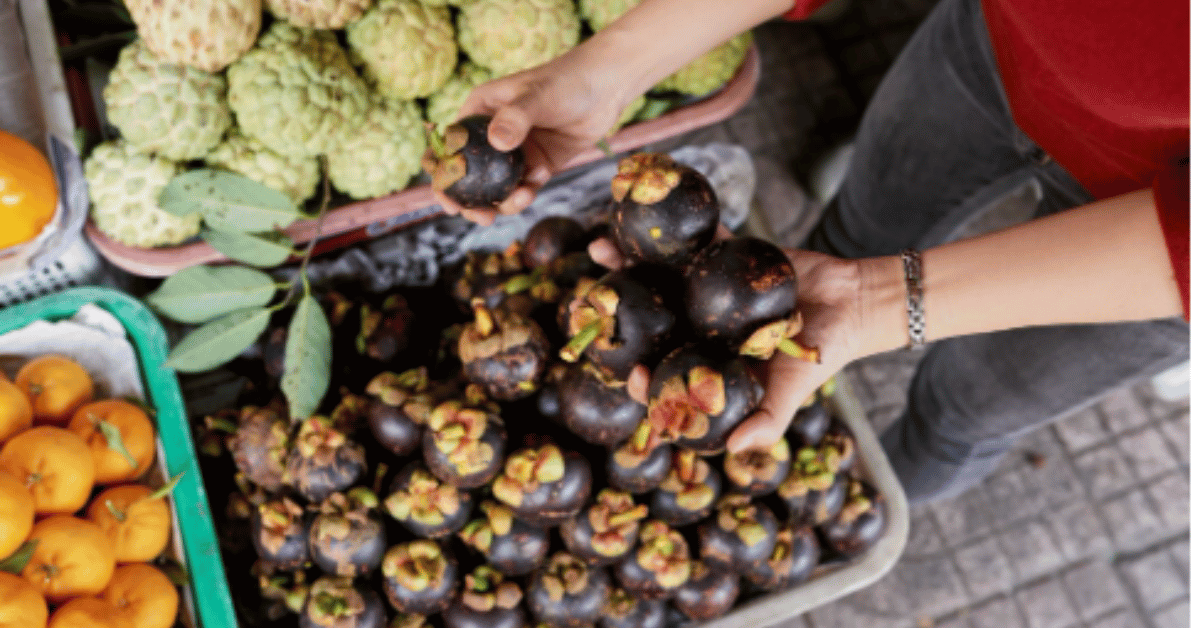The term corossol may sound unfamiliar to many, but it refers to one of the most fascinating tropical fruits in existence, more widely recognized as soursop. Corossol is both a fruit and a cultural symbol, valued not only for its distinct flavor but also for its reputed medicinal properties. For centuries, communities across Africa, the Caribbean, Asia, and Latin America have embraced corossol in their cuisines, remedies, and even folklore. Today, global attention is drawn to corossol due to claims about its health-enhancing potential, sparking both curiosity and scientific debates.
For searchers asking, what exactly is corossol, and why is it important? The answer lies in its rich profile: corossol is a green, prickly fruit with creamy white pulp, often consumed raw, juiced, or incorporated into desserts. Beyond its refreshing taste, it is packed with vitamins, antioxidants, and bioactive compounds, making it a central subject of research in natural health. Whether consumed for its nutrients, traditional medicinal value, or culinary versatility, corossol stands as a fruit deeply intertwined with culture, health, and sustainability.
This article explores corossol in a structured way: its botanical background, cultural history, nutritional makeup, traditional and modern medicinal uses, and evolving role in global wellness. Through a blend of scientific insights and cultural narratives, readers will gain an in-depth perspective on why corossol is far more than just a tropical delicacy—it is a bridge between tradition and modern science, a symbol of resilience, and a potential superfood shaping future diets.
Understanding Corossol: Botanical Origins
Corossol belongs to the Annonaceae family, scientifically named Annona muricata. It thrives in warm, tropical climates where humidity and rainfall are consistent. The tree itself grows between five to eight meters tall, bearing large, dark-green leaves that emit a distinct aroma when crushed. Its fruit, oval to heart-shaped, can weigh several kilograms, with soft spines covering its green exterior. Inside, the pulp is juicy, fragrant, and embedded with black, inedible seeds.
Unlike commercial fruits such as bananas or mangoes, corossol has a less industrialized production system, often cultivated in small-scale farms and family orchards. Farmers value its resilience, as it adapts to various soil types, though it performs best in well-drained conditions. Its seasonal availability varies by region, but in many areas, it peaks during late spring and early summer.
In terms of taste, corossol has been described as a fusion of strawberry, pineapple, and citrus with a hint of creamy banana texture. This unusual flavor combination explains its popularity in beverages and sweets, while its versatility makes it suitable for savory preparations in certain cuisines.
Cultural Significance Across Regions
The cultural footprint of corossol stretches across continents, making it a fruit with global resonance. In the Caribbean, it is cherished not only as food but as part of oral traditions, where elders often recount stories of its healing powers. In African households, corossol leaves are commonly boiled into teas believed to soothe fevers, calm nerves, and reduce inflammation. In Southeast Asia, especially in the Philippines and Indonesia, corossol-based juices are sold in markets as both a refreshing drink and a natural remedy.
Latin America holds a particularly strong attachment to corossol. In Mexico and Central America, soursop ice creams and candies are staples, while in Brazil, it is widely known as graviola. Each region attaches its own name, folklore, and recipes, giving corossol a multifaceted identity.
As one Caribbean proverb goes, “A bowl of corossol is a bowl of strength,” reflecting its symbolic association with vitality. This intertwining of health, culture, and spirituality makes corossol far more than a fruit—it is a cultural marker that preserves traditions and brings communities together.
Nutritional Profile of Corossol
The nutritional content of corossols explains much of its appeal in health-conscious communities. Rich in vitamin C, B-complex vitamins, dietary fiber, and essential minerals, corossol contributes to immune strength, digestive balance, and energy production. Its pulp is also loaded with antioxidants such as acetogenins, which are studied for their biological activities.
Below is a table summarizing corossol’s approximate nutritional values per 100 grams of fresh pulp:
| Nutrient | Amount per 100g | Health Role |
|---|---|---|
| Calories | 66 kcal | Provides energy without excess fat |
| Carbohydrates | 16.8 g | Source of natural sugars and fiber |
| Dietary Fiber | 3.3 g | Aids digestion and gut health |
| Vitamin C | 20.6 mg | Strengthens immunity, antioxidant function |
| Vitamin B1 (Thiamine) | 0.07 mg | Supports nervous system |
| Potassium | 278 mg | Balances fluids and supports heart health |
| Magnesium | 21 mg | Contributes to muscle and bone function |
This nutrient composition positions corossols as a balanced fruit—refreshing, nourishing, and versatile for both everyday diets and specialized health regimens.
Traditional Medicinal Uses
For generations, corossol has been central to folk medicine. Healers across regions have used its different parts—pulp, seeds, leaves, and bark—for diverse purposes. The fruit pulp is typically consumed to enhance strength, while leaves are boiled into teas for calming anxiety, reducing insomnia, and lowering fever. Some traditions employ poultices made from crushed leaves for treating skin inflammation and wounds.
In African herbal practices, corossols leaves are believed to regulate blood pressure and aid in managing respiratory infections. In Caribbean culture, “corossol tea” is consumed nightly as a natural relaxant. Seeds, though toxic if ingested directly, are sometimes processed in specific remedies for external use against parasites.
As one Jamaican herbalist remarked, “The corossol tree gives medicine in every part—it is a pharmacy in itself.” Such cultural wisdom highlights the depth of traditional knowledge that continues to inspire modern scientific studies.
Modern Scientific Interest
Corossol has drawn significant attention from the scientific community due to its phytochemical compounds, particularly acetogenins. These compounds are studied for their potential anti-inflammatory, antimicrobial, and even anticancer properties. Laboratory studies have shown that extracts from corossols leaves may inhibit the growth of certain cancer cells, though research is still at an early stage and not yet conclusive for clinical use.
Researchers also point to its antioxidant potential, suggesting that regular consumption may reduce oxidative stress, a factor linked to chronic diseases such as diabetes and cardiovascular conditions. While these findings are promising, experts caution against exaggerated claims. The scientific consensus emphasizes moderation and warns that corossol should complement, not replace, medical treatments.
“Nature gives us leads, but not miracles without proof,” noted one researcher in tropical pharmacology. This statement reflects the balance between appreciating corossol’s potential and avoiding overstatement until rigorous trials confirm therapeutic applications.
Culinary Uses and Global Popularity
Corossol’s remarkably versatile in the kitchen. Its sweet-tart pulp is enjoyed fresh, often scooped directly from the fruit. In beverages, it is blended into smoothies, juices, and cocktails, while in desserts, it finds expression in sorbets, ice creams, mousses, and custards. Latin American and Caribbean cuisines frequently showcase corossol in candies and jams, preserving its unique flavor for longer periods.
In savory applications, corossol occasionally appears in chutneys and sauces, where its tanginess complements spicy dishes. In Nigeria, for instance, it is sometimes mixed with peppered stews to balance heat with sweetness. Global chefs are now experimenting with corossol in fine dining, using it to create innovative pairings with seafood and plant-based meals.
The rise of “superfood” culture in global markets has also contributed to corossol’s increasing demand. Health stores in Europe and North America now stock corossol juices, powders, and capsules, introducing the fruit to audiences far beyond its native regions.
Corossol in Wellness Trends
Modern wellness industries have embraced corossol as a holistic health ingredient. From detox juices to natural supplements, corossol’s marketed as a multifunctional product that aligns with plant-based, sustainable lifestyles. The fruit’s bioactive compounds, along with its exotic appeal, make it particularly attractive to consumers seeking alternatives to synthetic supplements.
Below is a table highlighting corossol’s roles across different wellness sectors:
| Sector | Common Use of Corossol | Consumer Appeal |
|---|---|---|
| Nutritional | Juices, smoothies, raw fruit | Natural vitamins, immune boosting |
| Herbal Medicine | Teas, extracts, capsules | Traditional healing, relaxation |
| Skincare | Lotions, masks, oils | Antioxidant, soothing properties |
| Fitness | Energy drinks, protein mixes | Natural recovery and hydration support |
This integration reflects how traditional uses of corossol are evolving into modern-day wellness practices that attract global consumers.
Economic and Sustainability Considerations
The growing popularity of corossol has economic implications for farmers in tropical regions. As demand increases internationally, small-scale growers are seeing new opportunities to export corossol and its by-products. However, sustainability remains a concern. Overharvesting, poor storage infrastructure, and transport challenges often lead to losses, especially since corossol has a short shelf life.
Sustainable farming practices—such as organic cultivation, community-based cooperatives, and improved supply chains—are being promoted to ensure corossols production benefits both farmers and consumers. Moreover, initiatives to process corossol into powders and packaged juices help extend its market reach, reducing waste and increasing income for producers.
Conclusion: Corossol as a Fruit of the Future
Corossol is far more than a tropical curiosity. It embodies a remarkable blend of flavor, culture, and healing traditions, while also offering potential in modern health and wellness. From its roots in folk medicine to its place in cutting-edge nutritional research, corossols bridges the wisdom of the past with the aspirations of the future.
Its story is not only about nutrition but also about identity, resilience, and community. For farmers, it represents livelihood; for scientists, it offers a field of exploration; for families across continents, it remains a trusted companion for health and comfort. As global consumers continue to seek natural, plant-based solutions, corossol is poised to take its place as a fruit of the future—nourishing bodies, sustaining cultures, and inspiring generations.
In the words of a Haitian farmer, “When you plant corossol, you plant both food and medicine.” This sentiment captures the profound value of corossols—a gift of nature whose story is still unfolding.
FAQs
1. Is corossol the same as soursop, and can the names be used interchangeably?
Yes, corossol is another name for soursop, derived from the French term for the fruit. In English-speaking regions, it is commonly referred to as soursop, while in Latin America it is often called graviola. The names are interchangeable, though cultural and regional contexts may influence which is preferred. Regardless of the terminology, all refer to the same tropical fruit, Annona muricata.
2. Are there any risks associated with consuming corossol regularly?
Moderate consumption of corossols pulp is generally safe, offering numerous vitamins and antioxidants. However, its seeds are toxic if ingested and should never be consumed. Some research also suggests that high doses of corossol extracts may have neurotoxic effects, so caution is advised with concentrated supplements. Pregnant and breastfeeding individuals are often advised to avoid medicinal use of corossols until more definitive safety studies are available.
3. How does corossol contribute to modern health and wellness trends?
Corossol aligns well with the global movement toward natural and plant-based living. It provides vitamin C, dietary fiber, potassium, and unique antioxidants. Modern wellness industries use corossol in juices, herbal teas, skincare products, and dietary supplements. Its exotic appeal, coupled with its traditional association with healing, makes it a valued addition to holistic wellness programs.
4. What is the difference between using corossol as food and as medicine?
When consumed as food, corossol primarily provides nutrition and refreshment. Its pulp is used in desserts, juices, and everyday diets. As medicine, however, corossol involves more specific applications of its leaves, bark, or extracts, often within traditional herbal frameworks. While scientific research is exploring these uses, most healthcare professionals recommend considering corossol primarily as a nutritious fruit until more clinical evidence is available.
5. What future role could corossol play in sustainable agriculture and global food systems?
Corossol holds significant promise for sustainable agriculture due to its adaptability to tropical climates and growing global demand. Small-scale farmers benefit economically from exporting corossol and its by-products, such as powders and juices. If cultivated responsibly, with attention to biodiversity and fair-trade practices, corossols could become a valuable crop in balancing both food security and sustainable income opportunities for communities across the tropics.











